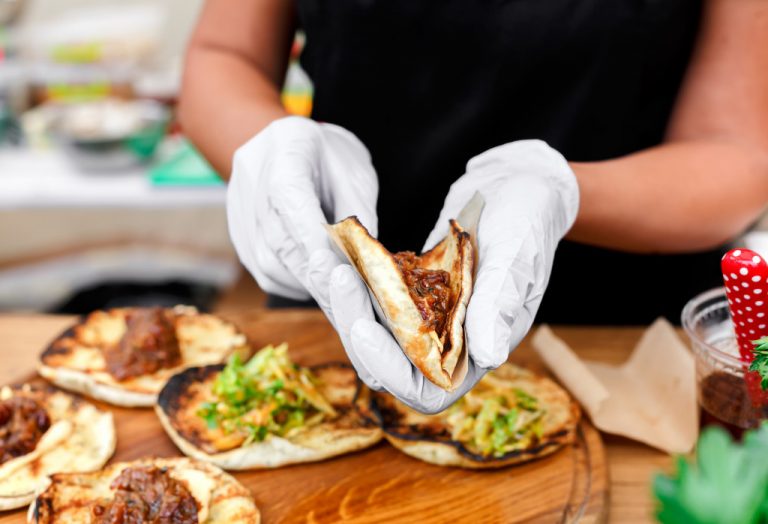COVID-19 has had a significant impact on organizations across various industries, including the food service. Due to mobility restrictions, quarantine orders, and other virus-related limitations, restaurants and other food companies could not serve visitors on site for months. Restaurants permitted to reopen had to comply with new laws on crowd control and onsite capacity.
Furthermore, restaurants must follow CDC COVID-19 guidelines, including increased sanitation and disinfection, social distancing, and personal protective equipment (PPE), among other things. Of course, this is in addition to following other food safety precautions, such as avoiding cross-contamination, heating meals to proper temperatures, and adequate food handling.
Training is a priority
Food safety training should be a severe concern now more than ever. Ensure that all employees are aware of food safety regulations as well as health practices. Include training as part of the onboarding process for each prospective hire. Stress the importance of adhering to all safety laws, including updated and modified pandemic regulations.
Make sure that everyone is following the rules. In case of negligence, take quick corrective measures. Remember that it’s people’s lives that are at stake, and mistakes and slips should not be tolerated. Provide worksite reminders, e-mails, smartphone messaging, pre-shift briefings, and training sessions to help avoid them.
Creating food-serving methods that are less hazardous
Customers feel the pandemic has permanently altered their perception of public behavior, with food services being a huge turning point. This indicates that many of the transitions and changes we experience now are expected to continue further.
Due to the risk of persons spreading coronavirus by respiratory droplets on serving utensils, surfaces, or even through the air, the traditional way of eating in a café, restaurant, and bars is no longer deemed safe. People are encouraged to bring their utensils instead of relying on what the food stalls provide.
Rather than sharing condiment bottles, the single-use packet supply is much preferred. Individual dinners are served rather than sharing platters. Contactless and limited alternatives, such as drive-through, delivery, take-out, and curbside pickup in which customers pre-pay and pick up their meal from a socially remote place, are now part of the option. Mobility and flexibility are more critical than ever. Thus, the food service industry relies on innovation from reliable and long-standing companies, such as Lakeside manufacturing, to provide high-quality transportation, storage, equipment, and service.
Making use of digital resources

Inspections of safety procedures are needed now more than ever. However, due to travel limitations, it is now challenging to get third-party reviews. As a result, restaurants must shift their focus to self-inspections to verify that all-important safety standards are being followed.
Digital technologies play a crucial role in acquiring a larger, more holistic perspective of one’s company. Tech solutions provide data on numerous safety and quality projects quickly and precisely, allowing business owners to promptly detect and repair issues before they become risky and hazardous. Paper systems do not give the same comprehensive perspectives, and they also pose the significant dangers of human error and lost paperwork.
Increasing the number of suppliers
The pandemic has thrown a wrench in supply networks, and food companies struggle to get the supplies they need constantly. It’s critical to keep supporting your usual dealers, particularly local businesses and farms, who are likely to be hurting due to the current economic downturn as well. To assure a continuous and safe supply of items, it’s a good idea for entrepreneurs to broaden their vendor list and verify them for quality and safety requirements.
Modifying emergency plans
Nobody anticipated a catastrophe as severe as COVID-19. Death tolls, infection, and new COVID-19 variants emerge each day, while the health facilities and the economy remain at the bottom, affecting everything in between. We need to modify our emergency plans and current crisis management policies to find the right balance continuously. This assessment should outline the crisis team and be developed ahead of time with all contact information.
While we all believed that COVID-19 would only be a temporary annoyance, it has become abundantly evident that it will be a long-term issue, and we must all adapt appropriately. Understand that many people will remain apprehensive of dining out because of the persistent worry of COVID-19. Although this can feel like a frightening, unpredictable, confusing, and frustrating moment, bear in mind that there are certain things we can control. We should constantly demonstrate dedication to safety procedures and keep staff and visitors healthy not only through words but also, most importantly, through actions. These should be our topmost priority at all times.




